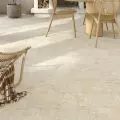Greenery has many shades. This is proven in the popularized podcast Shades of Green by landscape architects Maja Skibinska and Joanna Paniec. In an interview with A&B, they talk about the role of landscape architects in the design process, what spaces are good for living and how not to fall for greenwashing.
Joanna Paniec and Maja Skibińska
© Joanna Paniec archive; photo: K. Piądłowska
Ola Kloc: In Poland, the role of landscape architects is still often overlooked or reduced only to issues related to planting or arranging greenery. From your perspective, as active landscape architects, what can representatives of your profession bring to the project? How would you like your role to be perceived by investors, other architects and space users?
Maja Skibinska: I probably have a somewhat warped outlook, because in my work there were few moments when I felt professional bitterness and unfulfillment. Once a professional colleague, when I shared my thoughts on this subject with her, was puzzled, she thought I was probably unlucky, and I probably am a bit. Maybe it's also a matter of the fact that the Warsaw environment likes to keep up with current trends. Now there is a fashion for eco, so more people are interested in this subject, and consequently, the knowledge of landscape architects is more appreciated.
Joanna Paniec: Landscape architect is an industry that should be included at the beginning of the design process. And unfortunately, it is not uncommon for architects, or investors, to come to us only at the stage of a project they are about to submit for a building permit, and have just realized that they still need to do an inventory and greenery design. Then most often there is nothing left to save.
When it comes to the perception of the industry itself, it is indeed a common simplification that a landscape architect only deals with greenery. It seems to me that this is a matter of the peculiarities of our industry in Poland - the topics of specialization of landscape architects or professional licenses are still open, there is still a lot of work to be done.
I dream that the norm is that the landscape architect is included in the project at a very early stage, at the moment when you are just starting to think about the investment. This is an industry that looks at space holistically, and deals with landscape design - not just plants and greenery. Yes, landscape architects have specific competencies related to the design of greenery, nature threads, but it's really about the space, the landscape, the environment.
On the other hand, the plus side, and a small swallow of good change, is that more and more often in public procurements the requirement for a landscape architect on the team appears in the specifications of essential terms of the contract.
Surrounding the fountain in Park E. Szymanski in Warsaw, design: Apacad and Szelest studio
Photo: A. Wiktorko
Ola: So let's advertise the industry a bit - what real benefits can an investor gain by including a landscape architect at an early stage?
Maja: Great benefits! [Laughs] For example, those related to systemic design of nature-based solutions and small urban retention. This should be thought about at a very early stage, all industry professionals should realize from the beginning that this is important. Landscape analyses are also an important issue. In our country very few of them are done, because there are no such requirements, and then everyone complains that suddenly some "gargoyles" land in the field. Urban planning analyses are geared towards very basic things, they don't take into account landscape aspects, how the created element will later fit into the whole, how it will harmonize with the surroundings.
Joanna: An urban planner will look at the space differently, and a landscape architect, who not only looks at the landscape, but also pays attention to natural and social themes. Space - and we also talk about this in the podcast - affects us. Good landscape architecture design is about being as aware as possible of how we can positively influence a space. Spaces are different, they have their potential. The point is not to create objects out of context, but something that will create a harmonious whole. So that urban, public, but also private spaces are good for living. And in order for this to happen, it is necessary to first look at them and determine their potential and identify problematic issues, which are then solved with design activities.
The participatory process for the Warsaw Bench carried out by Głos Ulicy and the Szelest studio
Photo: T. Kaczor
Maja: It's great if, for example, a greenery inventory is done at an early pre-design stage, and even better if someone uses it at all. Because sometimes it's done because it has to be attached to the construction project, but it doesn't affect the work of the various trades, no one takes it into account when dealing with their scope. Then suddenly it turns out that "oh mother, here grows a tree! And now what? It needs to be cut down! Surprise! There are hundreds of them!". Now I'm exaggerating, but this is how it can be summed up in a humorous version.
Joanna: [laughs] The thing about multi-discipline teams is that everyone works with their design standards - the electrician with his, the sanitary branch with his, the architect keeps an eye on his framework, and in the end, after all, we're all concerned with making a person feel good in what we design and what will be realized, and not wondering if this tree will survive after all we've done to it. This requires an interdisciplinary dialogue, in which all branches are needed to create a good, functional space, to light it properly, drain it, irrigate it, aerate it, shape it....
Design of street greenery in connection with the reconstruction of S. Kostka Potockiego Street in Warsaw
Photo: Maja Skibińska
Ola: Space good for living - what does that actually mean? What kind of space is it?
Maja: It's a river topic! It consists of many aspects, for example, that it will respond to various human needs, that it will have variability in it, because these needs sometimes change within a month, sometimes within a year, sometimes a dozen years. Of course, any good space must be filled with greenery, this is really the basis of the basics, without greenery not a move! A space that is good for living is a space where we just feel very comfortable and safe.
Joanna: I also allow spaces without greenery [laughs]... but rarely! Landscaping is also design, fun, we need that too. But, adding to what Maja said, a well-designed space takes into account all users - human, non-human, it is also, in my sense, created with respect for nature in the broadest sense.
Climate change is unraveling, it's already starting to reach a wider and wider audience - we have disrupted something as humanity , and if we don't start thinking holistically, systemically, globally, it's going to be harder and harder to live. We are already seeing that we have disrupted seasons, that we have violent weather events, the problem of drought around the corner, heavy rainfall and so on. And the answer to this, among other things, is greenery.
Maya: And rainwater!
Development of the banks of the Iławka River, proj.: Apacad and Szelest studio
Photo: Maja Skibińska
Joanna: To put it more broadly , a well-designed space is one that takes into account all ecosystem connections. This is knowledge that is fortunately becoming more widely available and better understood.
Maja: Yes ecosystem design is an important topic. Already in college we were taught about what is now much talked about - design solutions in response to climate change, designing with respect for nature, supporting biodiversity, using rainwater. Going into the market, we were all (it was a very female vintage) shot that this is great, this is important and this is the way to do it, after all, everyone knows it! Then it turned out that it's not really important to most people, that it's of almost no interest to anyone.
At the very beginning of my career, I called around nearby architectural studios with a proposal for cooperation. I called one, and the designer I spoke with had no violet idea what a landscape architect does. And as I explained to her in two sentences what I do, she said: "aaaa no, then we are not interested". It was a wonderful collision with the market [laughs].
Ola: How can a layperson recognize what is a systemic action focused on nature and meant to prevent climate change, and what is simply greenwashing? How not to be fooled by pretty pictures or a seemingly "deconstructed" square with a few trees?
Maja: Sometimes even that square with a few trees can do a good job and not be greenwashing. I would make the assumption that if the outlay of subsequent costs - maintenance, upkeep, replacement of plantings - is large, it already falls under greenwashing. If it is a system that is stable, able to cope with the given conditions, then it was worth it. So I would put an economic lens on it. This is the case with the fashion for green walls, vertical gardens. 30, 40 percent of the plants have to be replaced every year, plus still irrigated often with drinking water. It looks beautiful, the investment is advertised as green and ecological, and it's a concrete manifestation of greenwashing.
Joanna: This is quite a difficult question, because greenwashing occurs at different scales. Often it comes out in event-workshop activities, companies do "green" activities where we have green balloons and other plastics on stands. Then we say it's greenwashing, because it's not an ecological, pro-nature activity. The real action is, for example, taking public transportation to a meeting and reducing our carbon footprint. But how can you tell if a space is greenwashing, i.e., that it is made not to function on many levels, but to look? The test could be how we feel in it, whether we want to be there, whether it feels good, whether people gather there, or whether it's non-functional, hot, windy, for example. But I don't know whether to pull this up under greenwashing....
Maja: The question is what was the starting point.
Joanna: It's hard to give a recipe to say after checking a few points whether it's greenwashing or not. It's probably worth listening to specialists at this point, that is, people who deal with space - landscape architects, urban planners, architects, ecologists, naturalists, because it is indeed sometimes the case that we make a decision, for example, to cut something and it may be controversial, but in the perspective of systemic, global actions and on the basis of natural knowledge, we know that we will restore the natural resource in question or restore it qualitatively.
I'm glad that more and more people, such as those who are completely unconcerned with greenery as a profession, know one thing - the tree is here to stay, the tree is important. People feel this.
Public consultation carried out by the Voice of the Street company and Szelest studio - a research walk in the park
Photo: A. Wiktorko
Maja: Indeed, this awareness and involvement of residents has been growing rapidly for the past few years, when we conduct any field work, someone always comes and asks, "Are they going to cut?" or "Are you going to cut?".
I live not far from where there is a major development going on at the moment, in connection with which cuttings are scheduled. It seems that they are being done in a rather chaotic manner. Residents defend these trees, as the crew comes to cut down the wrong tree, they verify that the tree is definitely related to the investment, as it is often obvious at first glance that it is not. They crisscross the neighborhood group to guard the trees, because they know that a team of chainsaws will come and they need to be watched. Some of the trees are already cut down, some were impressive, beautiful, decades-old lindens, oaks growing in the urban space. Last week, obituaries appeared commemorating specific specimens that grew in a particular place, and the inspector who made the wrong decision is also mentioned - "on October 25, having lived for about 60 years, a pedunculate oak was cut down by order of inspector X, notifies the local community immersed in deep sorrow and regret."
Joanna: I was terribly moved by this. I remember when poplars began to be cut down on my estate, it also immediately set people off - some said "cut it down, because it shades, because it's garbage," and some said " protect the trees, because it's a resource that's hard to restore, if we remove the tree, we'll be worse off." It is important to be aware that a tree performs a mass of different functions. This topic comes out when I conduct workshops with kids, and ask what trees are for - "because they give oxygen!", but they also provide a wind barrier, catch dust, give shelter to birds, insects. One could talk about this subject for a long time.
Maja: You once told a story about what else trees give, how you inventoried a pear tree on some housing estate... An elderly lady came to you, asking right away what the plans were, whether by chance there would be cutting down, and started telling you how important this tree was to her. Do you remember this story? It was very memorable to me ...
Joanna: I remember one such pear tree. I was doing an inventory in a public, urban space, that is, one where trees like linden, oak are most often expected, because they are "valuable" trees, and others, like wild apple trees, alliums are "trashy", they get dirty, their fruit falls off and they are a problem. But it actually turned out that this pear tree grows in this place not by accident and that it is not a miracle, but the residents take care of it, drone and guard it. I think I need to go and see what is happening to it....
Gdansk Butterfly Gardens and Kitchen Garden in Gdansk, garden design and workshops: Joanna Paniec
© Joanna Paniec archive
It's a beautiful thing that people have a need for contact with nature, with nature, and cities are human creations, and landscape architects are an industry that can tie this together well. In a city, we want to have various amenities, infrastructure, hot water, a roof over our heads, and at the same time combine this with greenery. It can be done, you just have to look systemically, do it expertly, in broader teams and, this is also an important element, be aware that it costs money.
At this year's conference organized by the Landscape Architecture Association, one of the speakers cited a Scandinavian example, a project to uncover a stream that was built over. Burying rivers under pavement, underground, is a huge natural loss. So the idea arose to open this stream, at a very high cost. And what was done? It was not stated: "no, it's too expensive, we're not doing it" only a public debate was held and the community was asked if they wanted to spend public funds on this investment. What makes me very happy - they wanted to do it. This is invaluable. Restoring the natural state of the river involves huge costs, so it's better to think, not to destroy, to preserve, to think, than to save it later, to restore it, to deconstruct it.
Maja: I thought you were going to say that these residents moved and started doing it on their own [laughs].
Joanna: [laughs] I'm glad that they didn't on their own, but that they did it with their heads and professionally.
Pop-up garden on Olowianka and greenery next to a residential building in Gdansk, proj.: Joanna Paniec
© Joanna Paniec archive
Ola: Where did the idea for the "Shades of Green" podcast come from? Who do you direct your broadcasts to?
Joanna: It came out of our social conversations, in one of which we joked that we would do a podcast. That thought germinated and there came a point when we actually grabbed the phone and said - let's do this podcast[link]! So we started having specific conversations about what it would be about, who we would want to speak to, and how we could move forward with it.
Maja: In addition to speaking to people who are professionally sitting on the topic of design, we also speak to those who just feel it's important and want to learn as much as possible about it. We've had positive feedback from listeners who are completely uninvolved in the design industry, that this is an interesting topic to listen to entertainingly, as a hobby, and that you can learn something new in the process.
Joanna: We want to reach out to professionals in the various industries we encounter in professional fields, activists and amateurs interested in this topic. We try to speak in a straightforward, yet as substantive way as possible. We are committed to reaching the widest possible audience and raising awareness related to shaping an environment that supports well-being.
Ola: Thank you for the interview.






















































